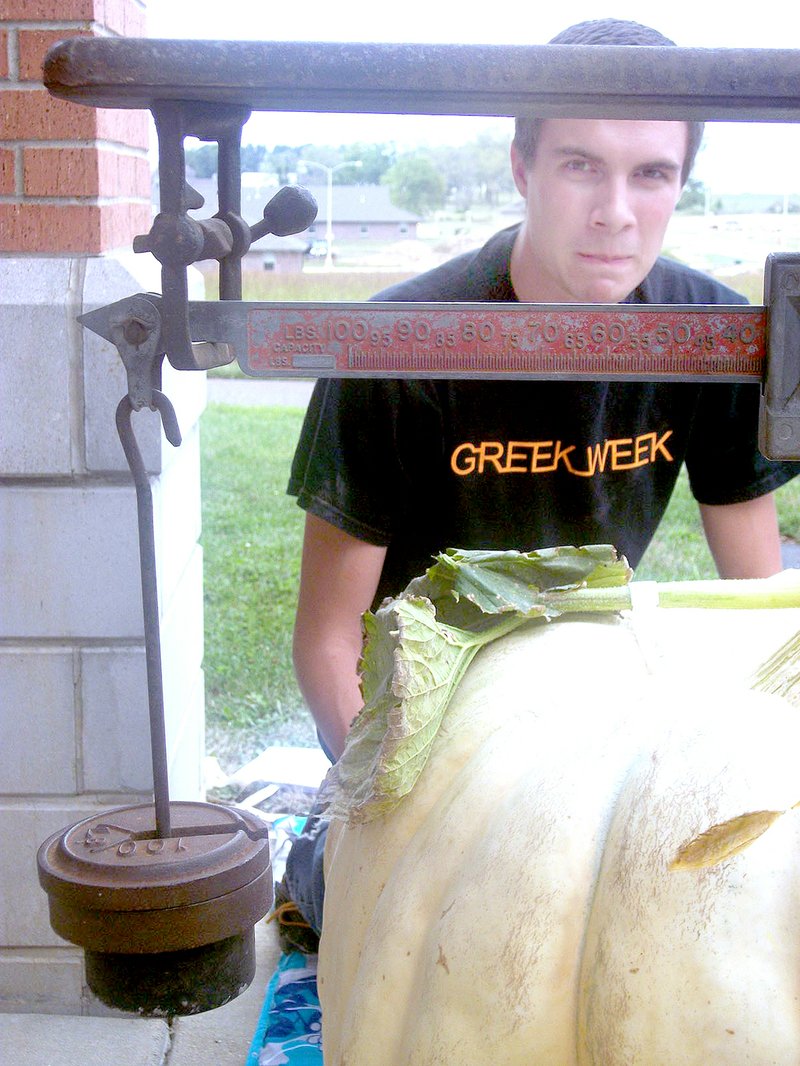Most of us remember Charlie Brown's friend Linus keeping watch in the pumpkin patch on Halloween night in search of the Great Pumpkin. If only he gone on this quest more scientifically! Fortunately, Logan Duncan is doing just that. Logan began his master's program with Missouri State University this summer working in Dr. Chin-Feng Hwang's plant breeding program.
Logan explains that, "My research involves the genetic improvement of pumpkins and squash in the genus Cucurbita. I am working with natural resistance genes from the wild species Cucurbita lundelliana and introducing them into cultivated species Cucurbita maxima through traditional breeding methods. C. lundelliana is a low growing (3-5 inches) vine and one plant can easily cover 200 square feet. It produces green gourds with white stripes that are about the size of a baseball. The fruits are bitter and inedible because of the alkaloid cucurbitacin. C. lundelliana is native to Central America and have maintained resistance to several mosaic viruses, crown rot, powdery mildew and squash vine borers."
Logan is working with Cucurbita maxima and notes that, "This species includes the cultivars Atlantic giant, buttercup, banana, turban and Hubbard squash. Genetic improvements have already been made to introduce mosaic virus resistance and powdery mildew resistance in to C. maxima, so I decided to work with squash vine borer (SVB) resistance."
Logan became interested in this project in high school when he started growing Atlantic giants. He recalls that, "The squash vine borer cut my growing season short more than a few times and the only way for me to control SVB is to use chemical insecticides. If I can introduce the genes for SVB resistance into cultivated varieties, dependence on pesticides would be reduced."
Logan still enjoys the Great Pumpkin competitions. He says, "I will be taking one of the pumpkins used in my project to Republic Missouri's Pumpkin Daze on Saturday, Oct. 4. If all goes well, that is! Two weeks is still plenty of time for the bottom of the pumpkin to rot out, or for it to split from growing too fast. The most recent measurements put this pumpkin somewhere around 900 pounds. Growth has slowed considerably in the past couple of weeks to five pounds per day. In the month of August the pumpkin put on between 30 to 40 pounds a day for a few weeks."
Logan has already scoped out the competition. He has observed that the size of first place winners at Republic's Pumpkin Daze can be variable. "Last year first place went to a pumpkin just under 400 pounds, but in 2008, Nancy Burgess broke the state record with a 1,244 pound pumpkin," he said. Logan suggests anyone is interested in growing giant pumpkins visit bigpumpkins.com. He also is willing to share seeds he has saved from some of his Great Pumpkins. You can contact Logan at [email protected] if you are interested in obtaining some seed.
Direct comments or questions concerning this column to Marilyn Odneal via email at [email protected]; write to Missouri State Fruit Experiment Station, 9740 Red Spring Road, Mountain Grove, MO 65711; or call 417-547-7500. More information can be found at http://mtngrv.missouristate.edu.
Community on 09/25/2014
